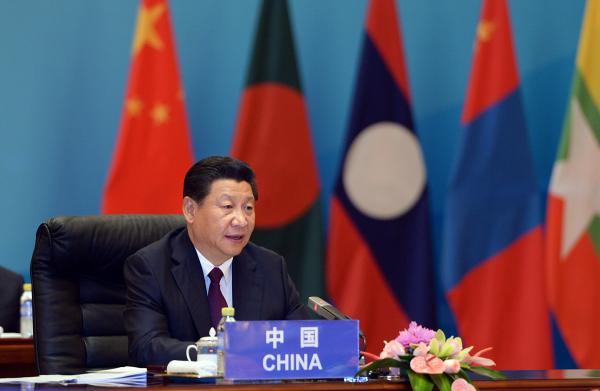

 |
| President Xi Jinping gives a speech about development and cooperation. (Photo/Xinhua) |
The Silk Road Economic Belt and the 21st Century Maritime Silk Road are a path that connects the ancient to the modern, connects China with the world. How many countries will be influenced by its design, and what changes will the Belt and Road bring to the world?
A blueprint connecting China to the west and to the south
Transportation is the lifeblood of both the ancient and the modern Silk Road. In ancient China, people had to use camels to travel for months or even years to transport and exchange with each other; today, people of different regions find it much easier to communicate with each other with the development of technology. Connectivity, especially connectivity in infrastructure, is an important part of the Vision and Action of jointly building the Silk Road Economic Belt and the 21st-Century Maritime Silk Road.
In the past year, projects like the China-Russia cross-border Railway Bridge, the China-Pakistan Karakoram Highway, the Gwadar Port freeway, the China-Myanmar railway, the China-Laos-Thailand railway, and the construction of Indonesia's port and economic development zones have all been launched. Because people now live in an age when fluent communication is much more in need than ever, the times demand connectivity.
Complementarity: A road to mutual benefit and win-win cooperation
China has a very close relationship in trade with the countries along the Belt and Road. In 2014, the bilateral trade value in imports and exports between China and the countries along the Belt and Road reached 7 trillion yuan, with a growth rate of 7 percent; this represented a quarter of the total value of China's imports and exports. In the first quarter of this year, China's exports to countries along the Belt and Road have grown 10 percent, making up 28 percent of the gross export value; and imports has reached 91.5 billion dollars, making up 23.4 percent of the gross import value.
The Belt and Road across Asia, Africa, and Europe connects the vibrant Asian Economy and the developed European Economy. Experts estimate that in the next 10 years, countries along the Belt and Road could be the world's third-fastest developing zone.
Toward building a community of common destiny
There are now more than 60 countries, regions, and international organizations participating in the construction of the Belt and Road. And just as Director-general of the International department at the Ministry of Commerce Zhang Shaogang says, China has been keeping an open mind. Whenever any country along the Belt and Road expresses interest and a will to enter into cooperation, China will always respond positively.
Yu Jun, the director of international affairs and China's diplomatic research center at Chinese Academy of Governance, told People's Daily that the Belt and Road is an equilibrium point for both China's interests and the interests of the world. "China adheres to the idea of interconnection, exchanges, and trade contacts, advocates the diversity of civilization, stresses mutual learning, economic cooperation, and cultural exchange, and looks for win-win opportunities in economy, politics, culture and society. The whole philosophy behind this has always been equity, justice, and building the community of destiny for all mankind."
This article is edited and translated from 《融通东西的“一带一路”》,source: People's Daily, author: Shen Mengzhe
 J-11 fighters in air exercise
J-11 fighters in air exercise Beauties dancing on the rings
Beauties dancing on the rings Attendants-to-be join Mr. & Miss Campus Contest
Attendants-to-be join Mr. & Miss Campus Contest Beijing's toughest anti-smoking law takes effect
Beijing's toughest anti-smoking law takes effect Family lives in cave for about 50 years in SW China
Family lives in cave for about 50 years in SW China PLA soldiers operating vehicle-mounted guns in drill
PLA soldiers operating vehicle-mounted guns in drill Blind carpenter in E China's Jiangxi
Blind carpenter in E China's Jiangxi China hosts overseas disaster relief exercise for the first time
China hosts overseas disaster relief exercise for the first time 20 pairs of twins who will become flight attendants in Sichuan
20 pairs of twins who will become flight attendants in Sichuan Obama is sowing discontent in S.China Sea
Obama is sowing discontent in S.China Sea Rescuers work through night to reach cruise ship survivors
Rescuers work through night to reach cruise ship survivors Driving through limbo
Driving through limbo Facing down MERS
Facing down MERSDay|Week